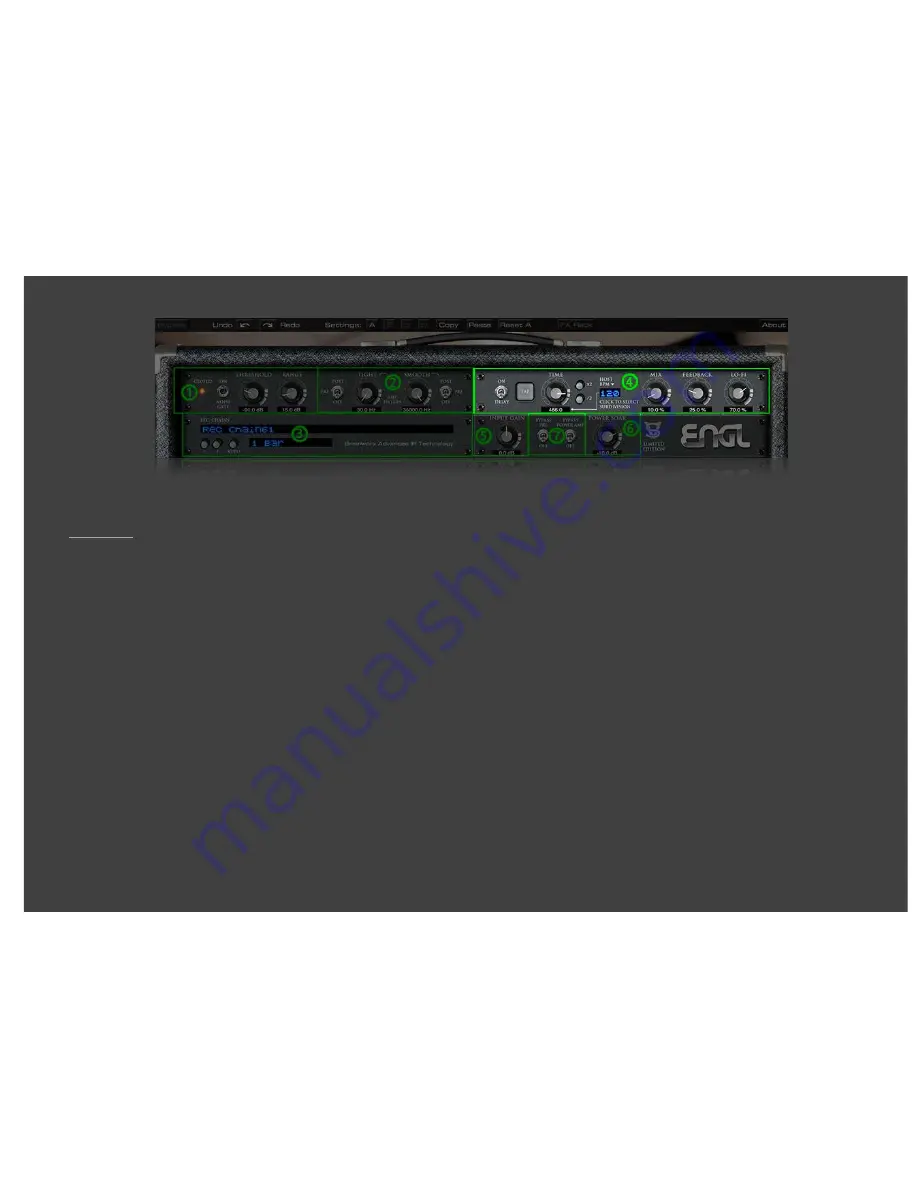
The controls of the ENGL FX Rack
4. LO-FI DELAY
We have modeled a vintage stomp box delay and modeled the typical sound of it.
Limited frequency bandwidth, fading high frequencies on repeats, etc. Then we add-
ed modern features like a mix control, DAW controlled bpm-based tempo sync, etc.
Of course you will use your favorite selection of external effects like Chorus, Flanger,
Reverb and even other Delays to achieve your signature guitar tone, but we feel that
a nice & easy delay comes in handy even if you only want to try out presets etc.
Testing a lead / solo sound without hearing at least a touch of delay wouldn´t sound
realistic for many players, so we added this one effect. Plus, we really like the sound
of this vintage delay
lay
lay
lay la
la l.....
DELAY on/off:
Activate or deactivate the delay and all of its parameters with this switch.
Switch up: Delay is activated.
Switch down: Delay is bypassed / off.
TAP:
You can adjust the delay time by clicking rhythmically on the TAP button with your
mouse. This way you can adjust the tempo of your delay to your guitar riffs even if
you don´t play with a DAW and bpm-based tempo or click track.
TIME:
Alternatively you may just dial in a delay time based on milliseconds using the TIME
knob. Maximum Delay Time: 1,000 ms.
X2 & /2 (adjusting the delay time):
You may switch the actual delay time to double speed by clicking the /2 button.
You may switch the actual delay time to half time by clicking the x2 button.
Both buttons can be pressed repeatedly as long as the maximum delay time of
1,000 ms is not exceeded.
HOST BPM:
This LED panel indicates the actual tempo (4/4
th
, based on bpm, beats-per-minute)
reported by the DAW host software
MIX:
Use the MIX control to blend in as much delay signal with the dry amplifier sound
as desired. For unobtrusive delays we recommend settings around 10%, heavier
effect sounds may require settings of 50% or more.
FEEDBACK:
The FEEDBACK controls the number of repeats. While a setting of 99% will result
in an almost infinite delay loop, a typical setting for a rock lead sound may be
around 25%.
LO-FI:
With the LO-FI knob you control the amount of internal distortion, the resampling
quality, etc. The higher you go the worse the quality gets from a pure technical
stand point... but the more interesting it may sound for many guitar sounds and
styles.



























